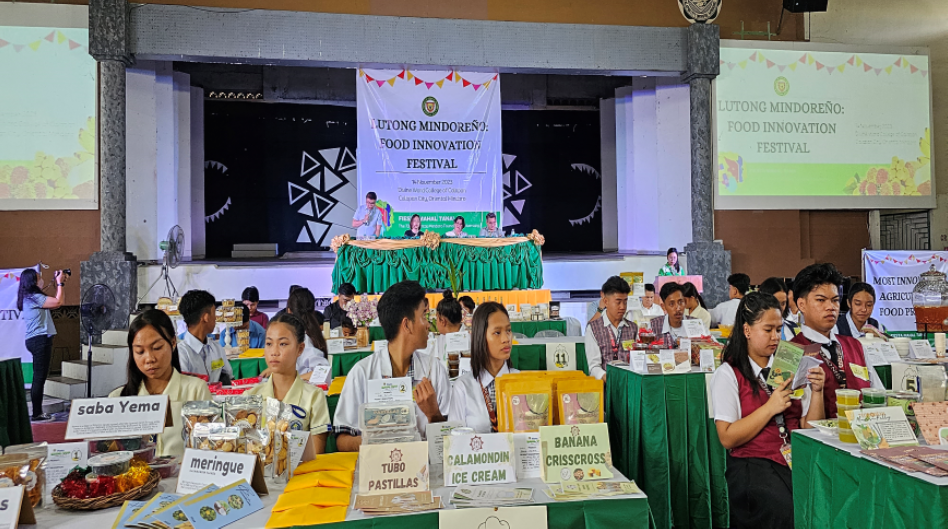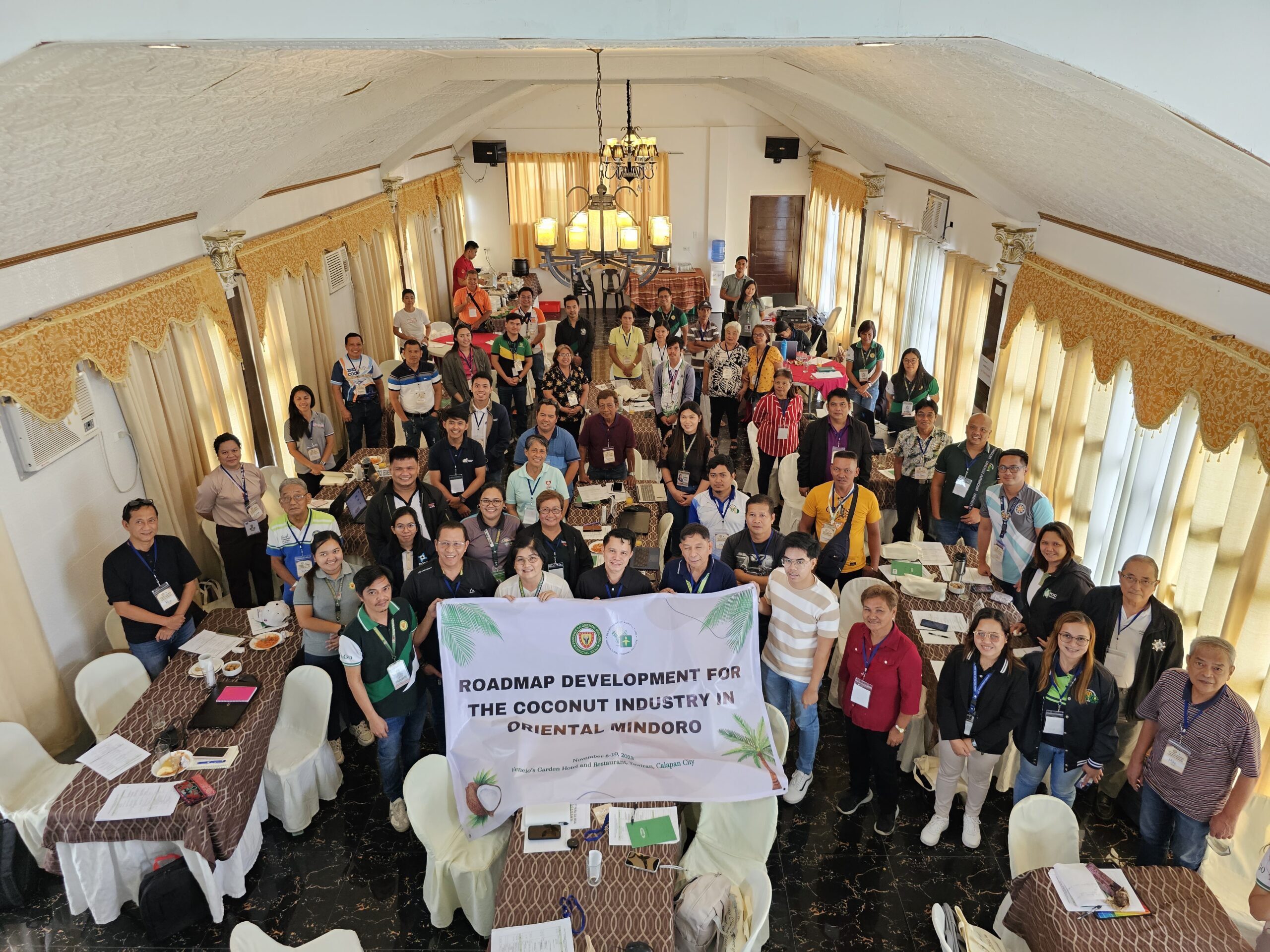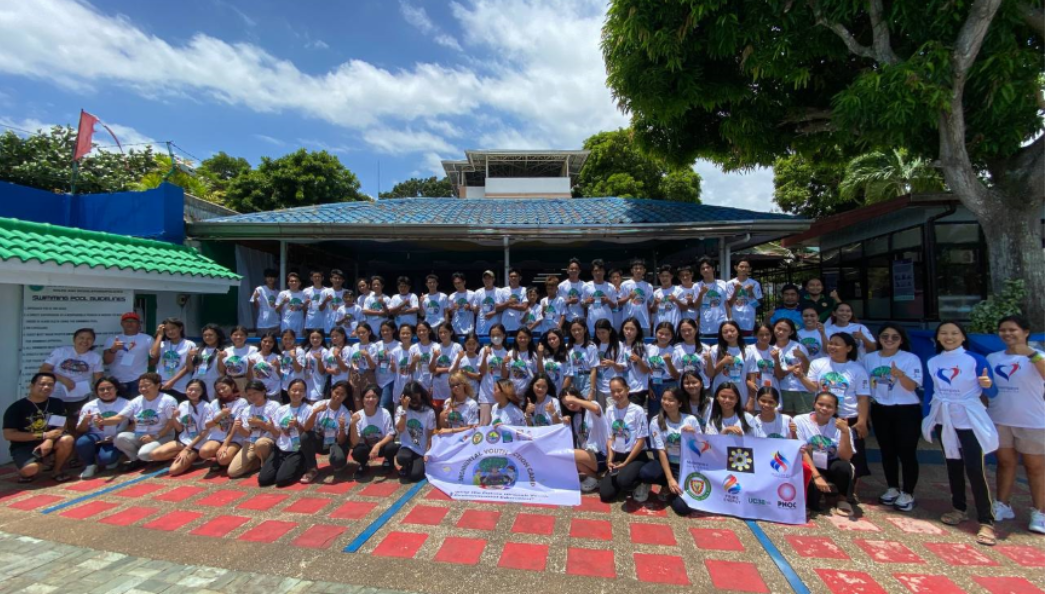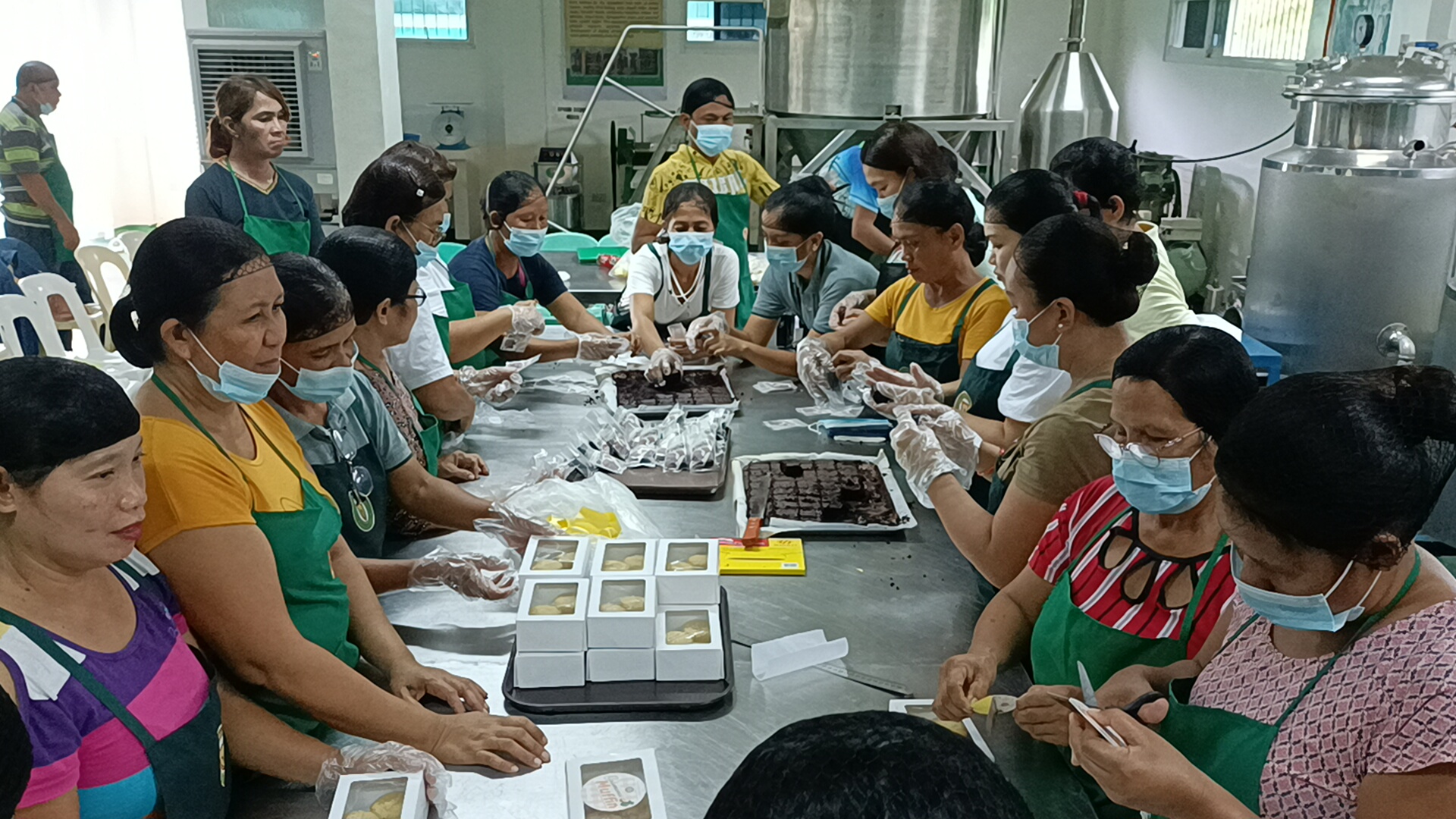AGRI-PROFILE: BACO, ORIENTAL MINDORO
Baco, Oriental Mindoro
Baco, officially the Municipality of Baco, is a 3rd class municipality in the province of Oriental Mindoro, Philippines. According to the 2015 census, it has a population of 37,215 people.
Crop Production and Land Utilization by type
Twenty nine percent of the total agricultural area of the municipality is devoted to rice production, and twenty barangays are considered as rice producers. Only four (4) barangays: Mangangan I, Mayabig, Bangkatan and Alag have access to Communal Irrigation System (CIS), thus making barangay Mayabig and Mangangan I as the highest rice producers. The remaining sixteen (16) barangays are dependent on other sources of irrigation such as water pumps or shallow tube wells.
42.50 % of the total rice area or one thousand eighty nine hectares are still dependent on heaven for irrigation, thus the need for irrigation support and the rehabilitation of existing irrigation canals which have been neglected for almost a decade.
To support the rice production program, the local government unit has procured and distributed inbred and hybrid seeds, organic and inorganic fertilizer for the implementation of balanced fertilization strategy and conducted farmers field school (FFS) for rice production.
To support the rice production program, the local government unit has procured and distributed inbred and hybrid seeds, organic and inorganic fertilizer for the implementation of balanced fertilization strategy and conducted farmers field school (FFS) for rice production.
Vegetable seeds (OPV and hybrid) and corn seeds (registered and certified) were given out to farmer growers by DA RFU IVB.
Vegetable seeds were distributed to farmer beneficiaries under the 50-50 scheme.
Banana being the OTOP of the municipality was included in the priority program of the Provincial Agriculture Office. A half hectare demo farm on lakatan production has been established in barangay San Ignacio, organic fertilizer and planting material (tissue culture) has also been provided.
PCARRD-DOST has established an eight (8) hectare demo farm on saba production in barangay Dulangan 2 and San Ignacio and a two (2) hectare demo farm on latundan production in the same barangay. Farm inputs and technical assistance were provided by the agency for three (3) years. Lakbay aral activities were conducted in the area by farmer and student groups from different provinces. The project aims to showcase the application of package of technology (POT) on banana production to achieve higher yield.
Existing Major Agricultural Crops by Area, Production and Market, 2009
| Major Crops | Area | Production | ||||
|---|---|---|---|---|---|---|
| Barangay | Hectares | % Total | Volume | Value | Current | |
| (MT) | Yield/ha. | |||||
| 1. Rice | 20 | |||||
| 1st cropping | ||||||
| Irrigated | 1473 | 16.83 | 5,838.20 | 87,573,000.00 | 3.96 | |
| Non-Irrigated | 1089 | 12.44 | 3,702.20 | 53,928,750.00 | 3.3 | |
| 2nd Cropping | ||||||
| Irrigated | 6,253.70 | 93,805,500.00 | 4.2 | |||
| Non-irrigated | 3,833.70 | 57,505,500.00 | 3.5 | |||
| 2. Banana | 27 | 1368.52 | 15.63 | 10.072.30 | 70,506,100.00 | 7.36 |
| 3. Coconut | 27 | 4,626.00 | 52.86 | 3,199.38 | 47,990,700.00 | 0.69 |
| 4. Citrus | ||||||
| -Calamansi | 266.34 | 3.04 | 1,731.21 | 17,312,100.00 | 6.5 | |
| -Zsinkom | 29 | 0.33 | 145 | 1,450,000.00 | 5 | |
| 5. Vegetables | 27 | |||||
| and Corn | ||||||
| a. Vegetables | ||||||
| including | 50.87 | 0.58 | 292.54 | 4,388,100.00 | 5.75 | |
| legumes | ||||||
| b. Corn | 115 | 1.31 | 134,158.00 | 2,683,160.00 | 1.16 | |
| Total | 9,017.73 | 100 | 157,422.72 | 419,830,810.00 | ||
| Source: Municipal Agriculturist's Office | ||||||
Rice is the major agricultural crop of the municipality, Table above reveals an increase in rice production area and this ca be attributed to the conversion of areas devoted to banana, citrus, and camote and the silted, swampy areas of barangay/s Dulangan I, Dulangan II, Tagumpay and Bangkatan, these areas were utilized for rice production. Mangyan reservation area has also been utilized by the IP’s for rice production.
Majority of the rice farmers use inbred rice varies which they get from the local seed grower.
Majority of the rice farmers use inbred rice varies which they get from the local seed grower.
Shallow tube wells and water pumps are the common source of irrigation. Water pumps can be rented from enterprising farmers at the rate of P700.00 per hectare and hand tractors can be hired at the rate of P2500.00 per hectare.
A significant increase in the volume of production of banana despite a decrease in the area devoted to this crop can be attributed to the adoption of the latest farming technologies like the use of tissue cultured meri-plants, proper cultural management practices like deleafing, desuckering, stem and mat sanitation and establishment of drainage canal.
Saba variety is grown extensively in the municipality. Banana has been identified and included in the “One Town, One Product” program of the Department of Trade and Industry. The LGU of Baco has provided funding support for banana development program and banana processing.
Banana and gabi are being considered as an important source of cash for farmers and cassava for upland farmers. These crops are commonly planted in their backyards or grown as part of their farm.
An increase in coconut production can also be attributed to the farm input assistance like fertilizer provided by the Philippine Coconut Authority.
The provision of registered and certified seeds by DA RFU IVB contributed to an increase in the volume of production of corn.
The Provincial Agriculture Office and DA RFU IVB provided vegetable seeds, for the farmers to earn additional income and support nutrition program thru improved production and consumption of vegetables.
Agricultural crops like rice, banana, vegetables and camote planted in flood prone barangays were severely affected by the onset of heavy rains and flashflood.
Despite the occurrence of calamities, the increase in the volume of production of various crops can be attributed to the adoption of the latest farming technologies and the promotion of organic farming.
The Municipal Agriculture Office conducted trainings, information dissemination on the latest farming technologies in coordination with other agencies like the Provincial Agriculture Office, DA RFU IVB, ATI, PCARRD-DOST and MINSCAT.
Comparative Agricultural Crops & Rootcrops,Areas and Production (Y1-2008, Y2-2009)
| Major Crops | Area | Volume of Production | ||||
| Y1 | Y2 | Increase/ | Y1 | Y2 | Increase/ | |
| Decrease | Decrease | |||||
| 1.Rice | ||||||
| 1st cropping | ||||||
| Irrigated | 1,282 | 1,473 | increase | 4,695.05 | 5,191.70 | increase |
| Rain fed | 860 | 1,089 | increase | 3,049.50 | 3,595.25 | increase |
| 2nd cropping | ||||||
| Irrigated | 1,282 | 1,473 | increase | 5,191.70 | 6,253.70 | increase |
| Rain fed | 863 | 1,089 | increase | 3,076.20 | 3,833.70 | increase |
| 2. Banana | 1,436.21 | 1,368.52 | decrease | 8,617.26 | 10,072.30 | increase |
| 3. Coconut | 4,626 | 4,626 | Copra: | Copra: | ||
| 3,199,050 | 3,199.38 | |||||
| Nuts: | Nuts: | |||||
| 9,597,150 | 9,598,160 | |||||
| 4. Calamansi/Zsinkom | 344.93 | 266.34 | decrease | 2,242.04 | 1,731.21 | decrease |
| 38 | 29 | decrease | 247 | 145 | decrease | |
| 5.Vegetables/corn | ||||||
| a. Vegetable including | ||||||
| legumes | ||||||
| b. Corn (white) | ||||||
| 1st cropping | 50.75 | 90.5 | increase | 55.031 | 96.016 | increase |
| 2nd cropping | 98 | 115 | increase | 106.383 | 134.158 | increase |
| 6. Rootcrops | ||||||
| a. Camote | 30 | 13.2 | decrease | 150 | 66 | decrease |
| b. Gabi | 70 | 72.2 | increase | 1,050 | 1,083 | increase |
| c. Cassava | 16 | 33.36 | increase | 80 | 166.8 | increase |
| Source: Municipal Agriculturist's Office | ||||||
Table above reveals an increase in the volume of production of various crops despite the heavy rains and flashfloods that occurred in the municipality, except in low lying areas, and this can be attributed to the adoption of the latest farming technologies that are being introduced by the Municipal Agriculture Office in coordination with other agencies like DA RFU IVB, Provincial Agriculture Office, PCARRD-DOST and MINSCAT.
However, other areas devoted to various agricultural crops like citrus, banana and camote which were affected by the onset of pests and diseases due to abnormal weather condition were converted to rain fed rice production While siltation of swampy areas in barangay Dulangan 1, Dulangan2, Tagumpay and Bangkatan contributes to an increase in irrigated rice area.
Mangyan reservation area has been utilized by the IPs for rice production and this contributed to an additional area for this crop. Mercy Link and San Lorenzo Foundation negotiated with concerned agencies for the use of Mangyan Reservation area for crop production.
An increase in the volume of banana production is attributed to the adoption of the latest farming technology on banana production like proper cultural management practices such as desuckering, stem and mat sanitation, and deleaging to protect the banana from insect pests and diseases.
While an increase in coconut production was due to the fertilizer support and technical assistance by the Philippine Coconut Authority.
An increase in corn production was attributed to farm input assistance like registered and certified seeds from DA RFU IV-B.
Comparative Agricultural Crop Areas and Production, 2008-2009
| Major Crops | Area, ha. | Volume of Production, ton | ||||
| 2008 | 2009 | Increase/Decrease | 2008 | 2009 | Increase/Decrease | |
| 1. Rice | ||||||
| 1st cropping | ||||||
| Irrigated | 1,276 | 1,473 | increase | 4,695.05 | 5,838.20 | increase |
| Rain fed | 860 | 1,089 | increase | 3,049.50 | 3,595.25 | increase |
| 2nd cropping | ||||||
| Irrigated | 1,282 | 1,473 | increase | 5,191.70 | 6,253.70 | increase |
| Rain fed | 863 | 1,089 | increase | 3,076.20 | 3,833.70 | increase |
| 2. Banana | 1,436.21 | 1,368.52 | decrease | 8,617.26 | 10,072.30 | increase |
| 3. Coconut | 4,626 | 4,626 | ||||
| Copra | 3,199.05 | 3,199.38 | increase | |||
| 4. Calamansi | 344.93 | 266.34 | decrease | 2,242.04 | 1,731.21 | decrease |
| Zsinkom | 39 | 29 | decrease | 247 | 145 | decrease |
| 5. Vegetables/ | ||||||
| Corn | ||||||
| a. Vegetables/ | 50.87 | 292.54 | ||||
| Including Legumes | ||||||
| b. Corn(White) | ||||||
| 1st cropping | 50.75 | 90.5 | increase | 55.031 | 96.016 | increase |
| 2nd cropping | 98 | 115 | increase | 106.383 | 134.158 | increase |
| 6. Rootcrops | ||||||
| a. Camote | 30 | 13.2 | decrease | 150 | 66 | decrease |
| b. Gabi | 70 | 72.2 | increase | 1,050 | 1,083 | increase |
| c. Cassava | 16 | 33.36 | increase | 80 | 166.8 | increase |
| Total | 8,804.14 | 9,136.49 | 31,759.21 | 36,507.25 | ||
| Source: Provincial Agriculturist's Office | ||||||
Livestock and Poultry Production
Most farmers in the municipality are engaged in backyard swine and poultry production as an additional source of income. Due to inadequate resources, poultry and swine raising are being managed thru contract growing mode.
Existence of more than ten heads in backyard piggery creates problem in lowland barangays and these includes polluted air, presence of flies and mosquitoes especially with those without septic tank. Slaughtering carabao every baraca day causes its decreasing number and most often farm machinery is being utilized in farming. This reduces employment among laborers who are paid in the daily basis man and animal. Goat raising is not suitable in the area due to frequent rains and flashfloods. Cattle production requires minimum area, and there is an abundant supply of animal feeds. Large scale livestock and poultry raising is very limited in the municipality.
Deworming activities for large animals are being conducted by the Municipal Agriculture Office in coordination with the Provincial Vet Office. Animal raisers are requesting for the conduct of Artificial Insemination for large animals.
Existing Livestock and Poultry Farms, Year 2009
| Type | Area | Production | Product | ||
| Classification | Volume/head | Value | Market | ||
| LIVESTOCK | |||||
| 1. Swine | 9,340sqm | Backyard | 4,670 | P/15,276,214 | local |
| 544sqm | Commercia | 272 | 1,360,000 | ||
| 2. Cattle | 5,121sqm | Backyard | 1,138 | 21,019,000 | local |
| 3. Carabao | 7,803sqm | Backyard | 1,734 | 24,020,997 | local |
| 4. Goat | 854sqm | Backyard | 854 | 1,769,000 | local |
| POULTRY | |||||
| 1. Chicken | 16,374sqft | Backyard | 16,374 | 1,654,400 | local |
| 1,500sqft | Commercial | 1,500 | 900,000 | ||
| 2. Duck | 621sqft | Backyard | 621 | 64,930 | local |
| 3. Game Fowl | 438sqft | Backyard | 438 | 259,950 | local |
| 4. Turkey | 20sqft | Backyard | 20 | 2,000 | local |
| 5. Geese | 24sqft | Backyard | 24 | 5,400 | local |
| Source: Municipal Agriculturist's Office | |||||
Fish Production
The six kilometer shoreline covers six coastal barangay although Tabontabon is considered inland barangay but the major means of livelihood is fishing.
There is a conflict in water delineation for in accordance to Namria Baco being the original capital of Calapan, covers up to sixteen thousand hectares (16,000 has.) extended to the three islets of Calapan city now they proclaimed as part of their water territory thru House Bill ______ sponsored by Congresswoman Charity P. Leviste of the First district year ________ without the knowledge of constituents of Baco. This remains unsettled and subject to amicable settlement between Calapan City and Baco.
Fish Sanctuary in barangay Water established almost 3 year ago was endorsed to San Teodoro due to water dileneation.Low fish catch is being experienced by fishermen as shown by average catch of three kilos a day. This is due to water siltation as an effect of illegal cutting of trees, charcoal making, improper disposal of garbage, pollution. The traditional way of disposing garbage to stream, rivers, use of insecticides, pesticides on agricultural land has tremendous effects to rivers and sea water.
Inland fishing is being strengthened but with the constant flooding experienced due to prolonged rain and poor weather condition those engaged in this venture deemed wise to stop operation.
Commercial fishing vessels sometimes enter the water territory and this affects the school of fish for they are using active fishing gear.
The possibility of seaweeds production in Pambisan identified potential area for the purpose can’t thrive due to bulk of garbage coming from Calapan City covering the possible seaweeds area.
The move to strengthen the Bantay Dagat, FARMC is being identified through linkages of BFAR, Conservation advocacy on the way to counteract the possible effects of climate change and global warming. Rehabilitation of existing mangrove serving as nesting area, barriers to natural calamities, wind breakers of strong wind.
The municipal government is continuously allotting fund in the 20% Development fund yearly although in meager amount for the construction of Fish Sanctuary, maintenance of patrol boat given by BFAR, subsidy to Bantay Dagat and proposed construction of Fish Port of Mayagao to be solicited from BFAR Bureau of Fishery and Aquatic Resources.
There is a need to create Fishery Development office with Fishery Development Officer and least two staff for at present the designated Fishery Development Officer can’t fully concentrate on its prescribe duties and responsibilities doing one -man job operation and limited supplies.
The proposed project of Conservation International “From Ridge to Reef” the objective is to prevent flooding thru advocacy on the effects of illegal logging, improper disposal and burning of garbage, other practices that will harmful do effect to the environment.
Existing Fishing Grounds and Aquaculture Production, Year 2009
| Category | Location | Area (has.) | % |
| A, PRODUCTION FORESTS* | |||
| 1. Timber production (natural) | 200 | 3.7 | |
| 2. Timber production (plantations) | 350 | 6.48 | |
| Sub-Total | 1400 | 25.93 | |
| 1. NIPAS Areas | 1000 | 18.52 | |
| 2. Agro-forests | 150 | 2.78 | |
| 3 Pasture/Grazing Land | |||
| 4. Mineral Areas | |||
| 5. Watershed Areas | |||
| 6. Community-Based Forest Management Area | 0 | 0 | |
| 7. Other Special Uses (tourism, fish farms/pond, etc.) | 0 | 0 | |
| Sub-Total | 4000 | 74.07 | |
| GRANDTOTAL | 5400 | 100 | |
| Source: Community Environment and Natural Resources Officer/ | |||
| Provincial Environment and Natural Resources Officer (CENRO/PENRO) | |||
Agricultural Support Facilities
There is an insufficient number of multi purpose drying pavements and flat bed dryers available in the area, The lack of drying facilities usually resulted to disagreements between farmers especially during the peak months of harvest season.
There is a need for an additional farm to market roads and repair/rehabilitation and concreting of existing farm to market road.
| Post harvest facilities | Location | Number | Type/ | % | Remarks |
| and support services | Capacity | Utilization | Operational, needs | ||
| repair etc. | |||||
| Milling | 21 | Rice | Operational | ||
| Multipurpose drying | 38 | 50 | some needs repair | ||
| pavement | cavans | ||||
| Market Centers | Poblacion | 1 | stalls | 100% | |
| Warehouse | 16 | rice 200 | |||
| Other(Fish storage.... | cavans | ||||
| Source: Municipal Agriculturist's Office | |||||
Municipalities

Food Innovation Festival 2023: Lutong Mindoreño

PAGO, ATI pursues Roadmap for Oriental Mindoro Priority Commodities

PAGO, MFI Raise MPA Awareness Among Youth

PAGO Empowers Farmers through Innovative Processing Technique
Subscribe to our AgriInfoHub newsletter and receive the latest updates, expert insights, and valuable tips to cultivate success on your farm.
